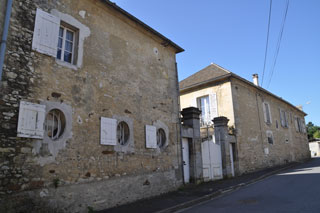Informations directionnelles
Emprunter l’escalier puis longer le mur de la propriété de la villa Marguerite. Au bout du chemin, prendre à droite, puis, en face de la villa Jeanne d’Arc, remonter la rue des Garennes. Continuer tout droit par une sente étroite enherbée et suivre le chemin à gauche. A l’intersection, prendre à gauche la rue de Montagny. Au bout de la rue, se diriger à droite vers la rue de l’église, puis à gauche pour arriver à l’église. La longer sur la droite pour avoir une vue sur le château Bellet.
Prochain point : lat="49.170609969224152" lon="1.767043486321792"

Holiday spot
New architecture for the new era
The background...
Dating back to the renaissance, the French word
villégiature (vacation or holiday destination), comes from the Italian
villeggiar, meaning “to go to the countryside”. The tradition of
villégiature helped shape the landscape of Ile-de-France: from 16th century country houses and hunting lodges, to 20th century holiday homes. First practiced by the cultural elite of Paris and Versailles, who came to breathe fresh air, eat fresh produce and enjoy some leisure time, the practice of taking country holidays, broadened both socially and geographically with the French Revolution, industrialization and the development of transport (royal roads, railways and cars).
While holiday homes vary in their architectural style, they are generally located on the edges of villages, near major roads, but with a good view of the landscape. A way to keep up appearances, the most modest amongst them were built with simple, inexpensive materials and decorated with faux exteriors (imitation stones and bricks etc.). Their elaborate decor mimics that of city hotels.
...and several villas
The rue de la Côte à Pigeon, over looking the town centre, was the ideal spot for holiday homes.
Villa Marguerite, built in 1905 by Alfred Letort, was a testament to his rise through the ranks of society. His initials are interlaced on the wrought iron gate. The villa’s architecture (the passageways, balconies and the use of coloured materials) was inspired by Château Bellet, where his mother had worked as a house maid.
A little further on, Villa Jeanne d’Arc is a massive construction, built out of exposed rough-cut, pointed, rubble stone. It is relatively rustic, with minimalist decoration. This home was apparently once part of a larger complex, including a second building and a square dovecot, now no longer standing, but visible on the 1819 land registry map. On the street side, oculus windows have recently been added to let allow light to reach the northern facade.




